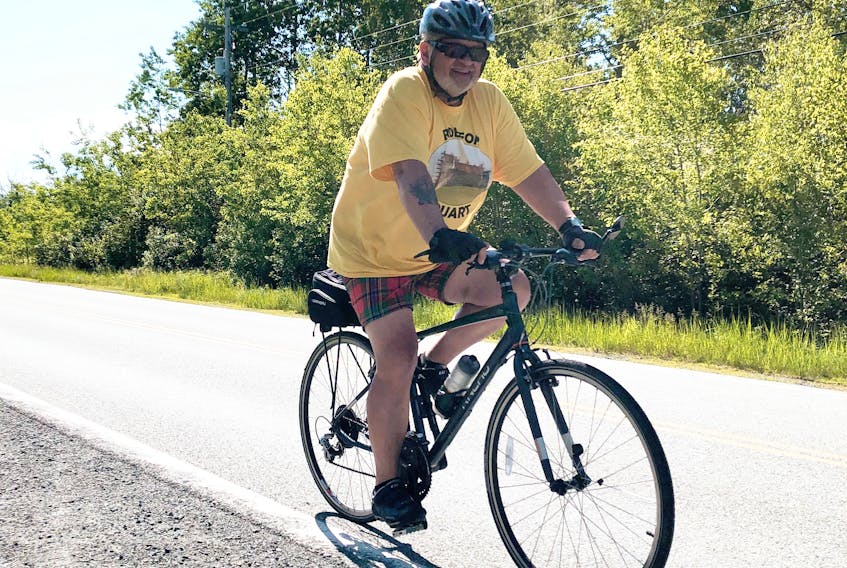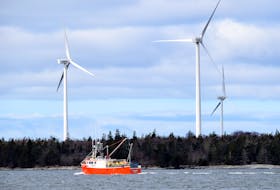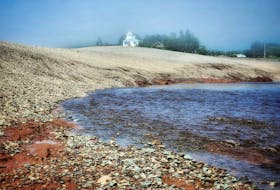AULDS COVE, N.S. — A nearly 400-kilometre bike ride is not something most 73-year-olds do.
Ian MacLean, who describes himself as a “portly” man, left Tidnish Bridge on June 12 and is expected to arrive in Washabuck and Iona in Cape Breton on Wednesday as part of a fundraiser to raise money for the restoration of the Clan Maclean ancestral and symbolic home Duart Castle on the Isle of Mull in Scotland.
“I’m on the board for the restoration of Duart Castle, which is the ancestral home of the Clan Maclean. We’ve owned it, with a break, dating back to 1360 and we started restoring it in 2014,” MacLean said. “We were told in 2012 that it’s in really bad shape. They put a bunch of mortar and concrete on the outside and all it did was hold the water in. It went through the 14-foot-thick walls and did a lot of damage.”
The Keep at Duart was built in 1360 when the Lachland Lubanach, the fifth chief of the clan, married Mary MacDonald, daughter of the Lord of the Isles. She brought Duart as her dowry.
Two wings were added in the 16th and 17th centuries.
The family lost the castle in the 17th century when the Earl of Argyll took the castle and lands to pay off family debts, but in 1911 Sir Fitzroy Maclean, the 26th chief, bought the castle back and restored it to the building that exists today. It’s one of the few remaining original clan seats that has survived as home of the chief and his family while also being open to the public.
The restoration is in the sixth year and it’s hoped the final of seven phases will begin in 2020, but it depends on funding.
MacLean, who has been to Duart Castle on several occasions with his wife and children, said the project is estimated at nearly CDN $4 million. Historic Environment Scotland has offered to pay half the cost while there’s a fundraising campaign going on amongst clan members to raise the remaining fund. The chief of the clan, Sir Lachlan Maclean of Duart and Morvern, paid a quarter of the remaining money required, while members of the clan are three-quarters of the way toward their goal of funding the final quarter.
He wants his grandchildren and their children to be able to sometime visit their ancestral home, but it needs to survive – hence his effort to be part of the global appeal to raise money to support is restoration.
“We’re almost there, but like any big project sometimes people lose enthusiasm and interest. My idea was that if a 73-year-old portly, old fart like myself can peddle 400 kilometres to raise money, maybe that will get others to join in,” MacLean said as he prepared to cross the Canso Causeway from Auld’s Cove to Port Hastings. “It has really been going well. We’ve had some big events along the way in New Glasgow and Antigonish and I think we’re going to raise a lot of money, way more that I hoped.”
MacLean said the clan needs to raise CDN $118,000 this year toward the restoration project.

“I think I’m making a really good start on that,” he said. “It has been challenging at times. I just went up one of the biggest hills I’ve ever climbed on a bicycle (Havre Boucher Hill). The locals said it’s three kilometres long but it felt like 43. I got up it, though.”
While there are plenty of ways to raise money, MacLean said, he wanted to do something that would garner attention and inspire other members of the clan and the community to support the project.
After all, he said, it’s not everyday someone his age sets out on a bicycle on a trek along Nova Scotia’s Northumberland Shore to Cape Breton and the cairn in hour of a MacLean descendant, Lachlan MacLean, at Washabuck.
From there, he plans to bike to the Highland Village in Iona.
“We picked the route along the Northumberland Strait because that’s where a lot of Scottish settlers settled, places like Wallace, Pugwash, Pictou, Antigonish and Cape Breton,” he said.
He did a lot of training, including a lot of peddling around Cumberland County. He was checked out by his family doctor, who sent him for a stress test that he said he passed with flying colours.
He also has a support team helping him, including the president of the Clan MacLean Association who lives in Cape Breton. There’s also a social media person in Karen McLean, who has been blogging.









